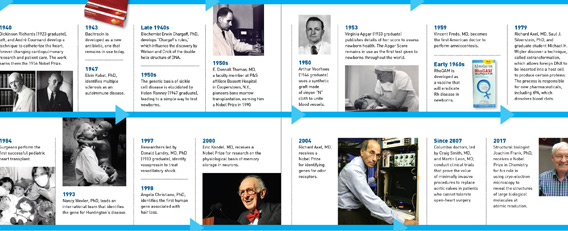A Timeline of P&S History

1818
Valentine Mott (1806 graduate) is the first surgeon in the world to operate on the innominate artery, a vessel near the heart, to treat an aneurysm. The daring operation to ligate that artery had never been tried.
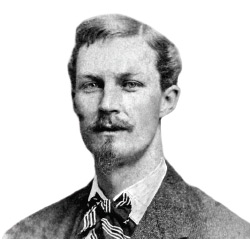
1872
Huntington disease is identified by George Huntington a year after he graduated from P&S.

1911
Columbia University and Presbyterian Hospital sign an agreement to establish the world’s first academic medical center.

1935
Surgeon Allen O. Whipple (1908 graduate) develops the Whipple procedure to treat some forms of pancreatic cancer.
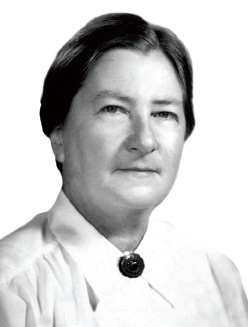
1938
Pathologist Dorothy Andersen, MD, PhD, identifies cystic fibrosis.
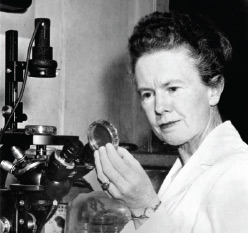
1939
Pediatrician Hattie Alexander, MD, develops the first effective treatment for a lethal form of bacterial meningitis.
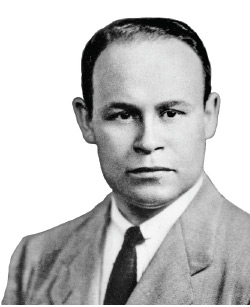
Late 1930s
Graduate student Charles Drew identifies an efficient way to process and store large quantities of blood, paving the way for modern blood banking.
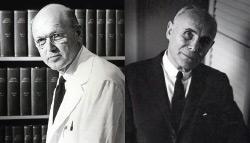
1940
Dickinson Richards (1923 graduate), left, and André Cournand develop a technique to catheterize the heart, forever changing cardiopulmonary research and patient care. The work earns them the 1956 Nobel Prize.
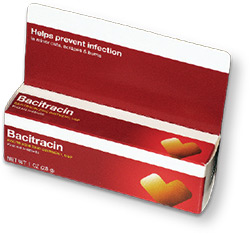
1943
Bacitracin is developed as a new antibiotic, one that remains in use today.
1947
Elvin Kabat, PhD, identifies multiple sclerosis as an autoimmune disease.
Late 1940s
Biochemist Erwin Chargaff, PhD, develops “Chargaff’s rules,” which influence the discovery by Watson and Crick of the double helix structure of DNA.
1950s
The genetic basis of sickle cell disease is elucidated by Helen Ranney (1947 graduate), leading to a simple way to test newborns.
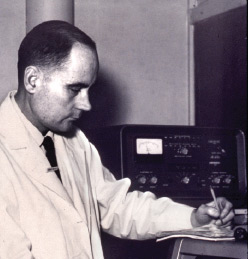
1950s
E. Donnall Thomas, MD, a faculty member at P&S affiliate Bassett Hospital in Cooperstown, N.Y., pioneers bone marrow transplantation, earning him a Nobel Prize in 1990.
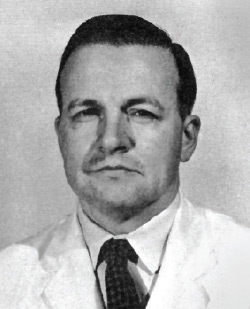
1950
Arthur Voorhees (1946 graduate) uses a synthetic graft made of vinyon “N” cloth to unite blood vessels.
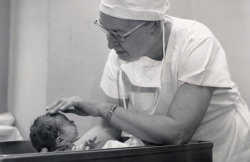
1953
Virginia Apgar (1933 graduate) publishes details of her score to assess newborn health. The Apgar Score remains in use as the first test given to newborns throughout the world.
1959
Vincent Freda, MD, becomes the first American doctor to perform amniocentesis.

Early 1960s
RhoGAM is developed as a vaccine that will eradicate Rh disease in newborns.
1979
Richard Axel, MD, Saul J. Silverstein, PhD, and graduate student Michael H. Wigler discover a technique, called cotransformation, which allows foreign DNA to be inserted into a host cell to produce certain proteins. The process is responsible for new pharmaceuticals, including tPA, which dissolves blood clots.
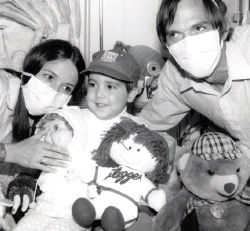
1984
Surgeon Eric Rose (1975 graduate) performs the first successful pediatric heart transplant at Columbia.

1993
Nancy Wexler, PhD, leads an international team that identifies the gene for Huntington’s disease.
1997
Researchers led by Donald Landry, MD, PhD (1983 graduate), identify vasopressin to treat vasodilatory shock.
1998
Angela Christiano, PhD, identifies the first human gene associated with hair loss.

2000
Eric Kandel, MD, receives a Nobel Prize for research on the physiological basis of memory storage in neurons.
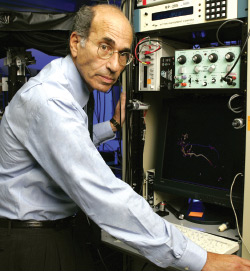
2004
Richard Axel, MD, receives a Nobel Prize for identifying genes for odor receptors.
Since 2007
Columbia doctors, led by Craig Smith, MD, and Martin Leon, MD, conduct clinical trials that prove the value of minimally invasive procedures to replace aortic valves in patients who cannot tolerate open-heart surgery.

2017
Structural biologist Joachim Frank, PhD, receives a Nobel Prize in Chemistry for his role in using cryo-electron microscopy to reveal the structures of large biological molecules at atomic resolution.
These contributions include several made by alumni who were also faculty members. See below for a list of other alumni who changed medicine over the past 250 years.

John Torrey (1818), a medical botanist for whom Torrey’s Peak and Torrey Pine are named
David McDonogh, a slave who completed studies at P&S in 1847 but was not allowed to graduate yet is considered to be America’s first African-American eye specialist
Amos Wilson Abbott (1869), founder of Abbott Hospital in Minneapolis and a founder of the American College of Surgeons
Edward Trudeau (1871), TB specialist and public health pioneer
William Welch (1875), one of “Big Four” founding professors of Johns Hopkins Hospital
L. Emmett Holt (1880), pediatrics pioneer
M. Allen Starr (1880), pioneer in development of neurology as a specialty
Oswald Avery (1904), pioneer in immunochemistry who discovered DNA as the substance responsible for heredity
Burrill Crohn (1907), identified Crohn’s disease
Alvan Barach (1919), developed first practical oxygen tent
Gulli Lindh Muller (1921), who made it possible for women to study at P&S
Virginia Kneeland Frantz (1922), member of surgical pathology team that described the insulin secretion of pancreatic tumors
Benjamin Spock (1929), revolutionary baby doctor whose books influenced the way parents raise their children
J. Lawrence Pool (1932), pioneer in vascular neurosurgery
Ephraim Engleman (1937), pioneering rheumatologist and arthritis researcher
John Lattimer (1938), helped establish the field of pediatric urology
C. Lockard Conley (1940), pioneering hematologist who conducted landmark inquiries into blood coagulation and sickle cell anemia
Margaret Morgan Lawrence (1940), leader in child psychiatry
M. Irene Ferrer (1941), refined the cardiac catheter and electrocardiogram
Albert Stunkard (1945), pioneering researcher of eating disorders and obesity
Arnold Relman (1946), influential editor-in-chief of New England Journal of Medicine
Alfred Knudson (1947), developed a two-hit hypothesis for cancer
Helen Ranney (1947), hematologist who elucidated the genetic basis of sickle cell disease and first woman to chair a department of medicine at a major medical school (UC-San Diego)
Lawrence L. Weed (1947), introduced a system now used in hospitals worldwide to organize patient data
Gilbert Ashwell (1948), glycobiology pioneer and co-discoverer of the Ashwell receptor
Hugo Moser (1948), researcher recognized for his research on peroxisomal disorders
Elizabeth Davis (1949), founding director of Harlem Hospital’s psychiatry department
Paul Marks (1949), president and CEO of Memorial Sloan Kettering Cancer Center for 19 years
Albert Starr (1949), co-invented and successfully implanted the world’s first artificial heart valve
Baruch Blumberg (1951), Nobel Prize winner for his work on hepatitis B
Norman Bank (1953), researcher and one of the founders of nephrology
Robert Butler (1953), noted for his work on the social needs of the elderly
Ernie Vandeweghe Jr. (1953), attended P&S while playing for the New York Knicks and later was the LA Lakers team doctor
Robert Coles (1954), noted for his social study of children in the United States
P. Roy Vagelos (1954), former CEO of Merck & Co., which developed many major new drugs under his leadership
Burton Lee (1956), White House doctor under president George H.W. Bush
Donald Lindberg (1958), pioneer in applying computer technology to health care
Kenneth Forde (1959), pioneer in the use of endoscopy as a diagnostic and surgical tool
Story Musgrave (1964), astronaut on six spaceflights and lead spacewalker to repair the Hubble Telescope
Suzanne Oparil (1965), leading cardiologist and researcher whose work contributed to the development of ACE inhibitors
Ted Stanley (1965), anesthesiologist who co-created the fentanyl lollipop
Robert Lefkowitz (1966), Nobel Prize winner for discovering the inner workings of cell surface receptors
Harold Varmus (1966), Nobel Prize winner for discovering the cellular origin of retroviral oncogenes and later director of the NIH and the National Cancer Institute
Allen Steere (1969), co-discovered Lyme disease
Eve Slater (1971), first woman to become U.S. assistant secretary for health
Yvonne Thornton (1973), first African-American woman to be board-certified in high-risk obstetrics
John Eng (1974), discovered that the poisonous venom of a Gila monster lizard had the potential to treat diabetes, leading to a drug approved in 2005
Donna Mendes (1977), first African-American female vascular surgeon certified by the American Board of Surgery
Oheneba Boachie-Adjei (1980), orthopedic surgeon whose foundation opened an orthopedic hospital in Ghana
Karin M. Muraszko (1981), first woman to chair neurosurgery at any medical school in the United States (University of Michigan)
Velma Scantlebury (1981), first African-American transplant surgeon in the United States and first African-American woman to perform a kidney transplant
J. Nozipo Maraire (1992), neurosurgeon who returned to her native Zimbabwe to build a hospital
Mary Killackey (1998), first woman to chair surgery at Tulane University
- Log in to post comments


